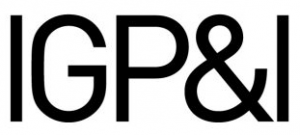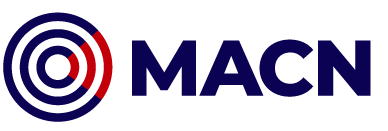A recent increase in incidents involving attendant ships colliding with offshore oil and gas, and renewable energy structures has led the UK’s Health and Safety Executive (HSE) to issue a safety notice focusing on the causes of such incidents.

Risk of collision with offshore installations from attendant vessels
Published 02 April 2025
Background
Collisions happen because personnel responsible for watchkeeping and the safe navigation of vessels are distracted by non-navigational tasks, meaning situational awareness is not properly maintained, combined with insufficient communication among the bridge team. These factors have led to an increase in collisions or near-misses, highlighting the need for improved navigational watch processes and systems.
Any incidents involving human failure, should not blame the individual, but rather, the failure should be addressed in the risk management systems implemented onboard. Measures should be taken to address the technical systems, operating procedures and organisational factors that increase the likelihood of human failures (performance influencing factors) and, to detect and correct these before any adverse consequences occur.
This is consistent with the requirements set out in international maritime conventions – notably SOLAS (Safety of Life at Sea) Convention Chapter V, Regulation 15.
Many investigations into navigation incidents list “human error” as the root cause of the incident. It is rare that an investigator tries to reconstruct the incident to fully understand the circumstances that lead to the incident. This way, investigations can miss entirely the underlying and dynamic problems of navigating a vessel in a particular environment.
The below case studies presented by the UK HSE, highlights the critical issues leading up to the human failures faced by vessels engaged in operations connected with offshore installations and windfarms over the past five years.
Case 1 - Loss of situational awareness and distracted by administrative tasks
A PSV was standing by a jack-up drilling installation during daytime with good weather. The vessel was in ‘green dynamic positioning’ (DP) mode, controlling surge but not sway. The single OOW on the bridge began administrative tasks on the bridge computer, keeping an eye on the installation through the front window. However, the view from the side window was blocked by the bridge toilet and ship’s funnel, making the OOW unaware of the vessel drifting sideways towards a neighbouring fixed installation. Consequently, the PSV drifted inside the 500m safety zone and collided with the leg of the installation.
Case 2 - Failure to keep a proper lookout
A multi-role emergency response and rescue vessel (ERRV) was standing by outside the 500m zone of a jack-up drilling installation. The Master had just handed over to the Officer of the Watch (OOW). It was dark, although the weather was good, and there was a lookout on the bridge. The OOW became engaged in non-navigational tasks, including writing minutes of a recent meeting and testing the bridge radios. The lookout was given permission to use the bridge computer. Neither the OOW nor the lookout noticed that a change in the conditions now meant the vessel was drifting towards the jack-up. A PSV was alongside the jack-up and raised the alarm that the ERRV had entered the 500m zone and was on a collision course with the installation. The jack-up control room attempted to call the ERRV to instruct them to leave the zone. The ERRV collided with one of the legs of the jack-up.
Case 3 - Failure to assess environmental conditions
A PSV was engaged in cargo operations alongside a mobile drilling installation. It was dark, weather conditions were marginal, and the vessel was in a drift-on position with the bow into the wind. The Master controlled the DP system, supported by a watchkeeping officer on the bridge. The crane operator asked if the vessel could change heading to access cargo outside the crane's reach. The Master pulled away from the installation and changed the vessel heading, causing the DP system to fail in maintaining the position. Consequently, the vessel drifted towards and collided with the drilling installation.
Case 4 - Lack of communication between the bridge team
A windfarm service operation vessel (SOV) was transiting through the windfarm during daylight with good weather. The vessel was in DP mode, and there was an OOW and Dynamic Positioning Officer (DPO) on the bridge. The DPO had control of the vessel and was changing heading to pass a wind turbine. The OOW was engaged in a non-navigational task. The change of heading resulted in the vessel being on a collision course with another wind turbine. The Master, who had gone to the bridge for a different purpose, noticed the developing situation and took control of the vessel but was unable to prevent the collision with the wind turbine.
Recommendations
Vessel operators and duty holders responsible for marine activities connected with offshore oil and gas installations, and windfarms should review operating procedures and take actions relevant to their operations. Key recommendations include:
Provide clear watchkeeping instructions
International Maritime Organisation (IMO) standards require a proper lookout to be maintained at all times. The lookout must focus solely on watchkeeping, with no other duties assigned. This applies when the vessel is engaged in a connected activity, including when outside the 500m zone on standby or transiting through a windfarm. Watchkeeping arrangements during these times should be reviewed against IMO standards and the International Regulations for Preventing Collisions at Sea to ensure all principles for keeping a navigational watch are applied. Ensure watchkeeping procedures and instructions for connected activities are clear and include periods when the vessel is on standby or transiting through a windfarm.
Review bridge resource management
Vessel operators should review bridge resource management (BRM) processes. Check the effectiveness of bridge teamwork and communication arrangements, including how the culture of challenging actions and omissions by any member of the bridge team is dealt with. Review the design, arrangement and use of bridge equipment, including electronic aids, automated functions and dynamic positioning (DP) systems, and the effectiveness of BRM training. BRM training is a behavioural tool which assists with the development of teamwork, and as such adds to existing competency assurance programs that aim to establish and maintain individual competency.
Review the use of bridge alarms
All cargo ships of 150GT or more must have a Bridge Navigational Watch Alarm System (BNWAS) to monitor bridge activity and alert the master if the OOW becomes incapacitated. The IMO's performance standards for BNWAS include an automatic function, operational only when a ship's heading or track control is activated.
However, the Safety of Life at Sea (SOLAS) Convention, Chapter V, Regulation 19 requires BNWAS to be ON and operating whenever a vessel is underway at sea. Duty holders and vessel operators should ensure BNWAS is always operational during connected activities or when standing by an installation. BNWAS alarms can be set between 3- and 12-minute intervals.
Operators should consider the proximity of attendant vessels to installations and select the appropriate interval, considering the distance a vessel may drift. Consider implementing new technologies, such as proximity warnings audible to bridge personnel when approaching an installation. These systems are already used on some windfarm vessels.
Monitor attendant vessels
Duty holders should ensure arrangements for monitoring attendant vessels can detect unplanned approaches to installations. Consider using an ERRV or automated systems like AIS tracking, guard zones, and alerts. If using an ERRV, the master and officers must understand their monitoring duties and have adequate resources and equipment visible from the watchkeeper’s position.
Automated systems should be tested regularly to ensure they provide necessary alerts at appropriate ranges and Closest Point of Approach (CPA). Position vessels on standby at a distance from installations to make unplanned movements discernible and allow time for remedial action.
Consider sailing audits for marine assurance
In all cases described in this safety notice, duty holders chartering the vessels had a marine assurance process to verify the vessel's operational capability and crew competence. However, incidents highlight that a shore-based assurance process, where the vessel is visited while in port, may not be adequate to identify watchkeeping and bridge resource management bad practices.
These issues may only become apparent when the vessel is operating. Therefore, duty holders should consider the benefits of sailing audits, where a qualified and experienced assessor can identify bad practices and coach good practices.
Final comments
Gard's mission is to prevent losses by learning from past incidents and addressing the underlying causes of errors through a "just culture" approach. Accidents are very seldom caused by a single person and needs to be seen in a holistic way in the context of the whole ship’s systems, crew and company organization!


